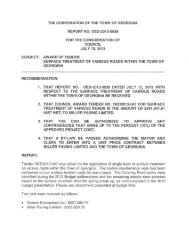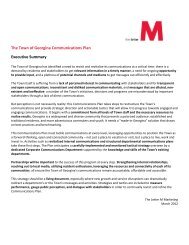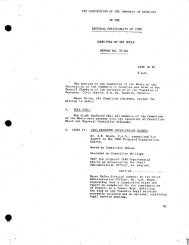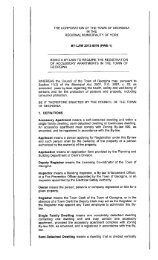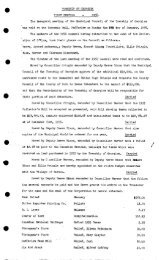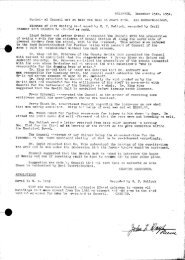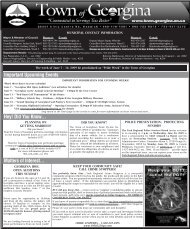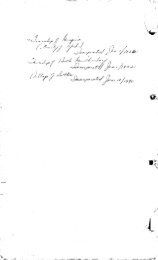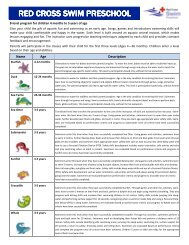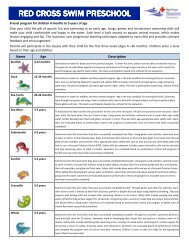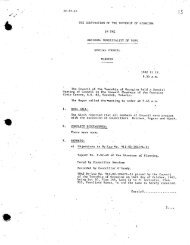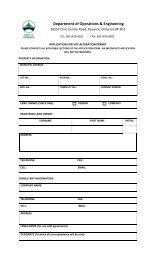Background Report - Town of Georgina
Background Report - Town of Georgina
Background Report - Town of Georgina
Create successful ePaper yourself
Turn your PDF publications into a flip-book with our unique Google optimized e-Paper software.
TOWN OF GEORGINA, SUTTON SECONDARY PLAN REVIEW STUDY<br />
BACKGROUND REPORT<br />
could be improved through the removal <strong>of</strong> barriers, treatment <strong>of</strong> urban stormwater run<strong>of</strong>f, groundwater recharge,<br />
bank/floodplain restoration, and riparian plantings to increase shading.<br />
Furthermore, the Black River provides an important north-south riparian corridor function that provides a linkage<br />
between the Oak Ridges Moraine to the south and the Lake Simcoe shoreline to the north. The large, contiguous<br />
forest block in the north-west corner <strong>of</strong> the Study Area provides an important connection with the Maskinonge River<br />
corridor to the west, which provides a southerly connection to the Holland River watershed. Combined, these core<br />
forest/wetland blocks and corridors comprise a key component <strong>of</strong> the Greenbelt Plan’s Natural Heritage System<br />
within the <strong>Town</strong> <strong>of</strong> <strong>Georgina</strong> and York Region.<br />
The Black River corridor and the large forest/wetland blocks within the Study Area are identified as core elements<br />
<strong>of</strong> the <strong>Town</strong> <strong>of</strong> <strong>Georgina</strong> and York Region Greenlands System and includes evaluated wetlands such as the Willow<br />
Beach Swamp Provincially Significant Wetland (PSW) , the Vachell Swamp PSW, the Mossington Park PSW,<br />
the Sibbald Point Wetland Complex (Locally Significant Wetland - LSW) and the Environmentally Significant Area’s<br />
(ESA) within or adjacent to the Study Area including Mossington Park, and two shoals along the Lake Simcoe<br />
shoreline.<br />
Watercourses and flood / fill areas are regulated by the Lake Simcoe Region Conservation Authority (LSRCA) within<br />
the Study Area and requires that for any development to proceed in areas under their regulation such as river or<br />
stream valley, a 15 m allowance from the greater <strong>of</strong> stable top <strong>of</strong> bank, floodline or meander belt width and wetlands,<br />
including 120 m from the edge <strong>of</strong> a PSW and 30 m from the edge <strong>of</strong> a non-PSW will require a permit from the<br />
Conservation Authority to proceed.<br />
It is important to note that the Sutton Secondary Plan Study Area’s core woodlands and wetlands are adjacent to the<br />
Greenbelt Plan’s Natural Heritage System and that natural heritage features extend into the Study Area providing<br />
core woodland and linkage functions.<br />
Opportunities and Constraints Overview<br />
Based on the review <strong>of</strong> the existing environmental conditions and key features within and adjacent to the Study<br />
Area, the following features would require protection with respect to future development:<br />
• Black River and Lake Simcoe;<br />
• Provincially Significant and Locally Significant Wetland complexes;<br />
• Environmentally Sensitive Areas (wetlands, upland forest, shoreline shoals);<br />
• Large, contiguous forest blocks (core woodlands, greenlands);<br />
• Corridors and connecting linkages – Black River, large forest blocks; and,<br />
• Environmental buffers/setbacks (stream channels, wetlands, upland forest edge).<br />
The basis <strong>of</strong> the environmental protection framework developed for the Sutton Secondary Plan Review Study is the<br />
LSRCA Natural Heritage System for Lake Simcoe Watershed (Final Draft - Beacon Environmental and LSRCA, April<br />
2007). There are three levels <strong>of</strong> high constraint which consists <strong>of</strong> the following:<br />
• Level 1: Provincially Significant. No Development Intrusion;<br />
• Level 2: Provincially Significant. No Development Intrusion; and,<br />
• Level 3: Watershed Significant. No Development Intrusion.<br />
A fourth level <strong>of</strong> low constraint has also been indicated in Figure 4 <strong>of</strong> Appendix B, as follows:<br />
• Level 4: Low Constraint. Existing Developed Areas, Agricultural Lands and Cultural Vegetation.<br />
The Planning Partnership • LGL Limited • Poulos & Chung • SCS Consulting • Cushman & Wakefield LePage | July 2008<br />
9



